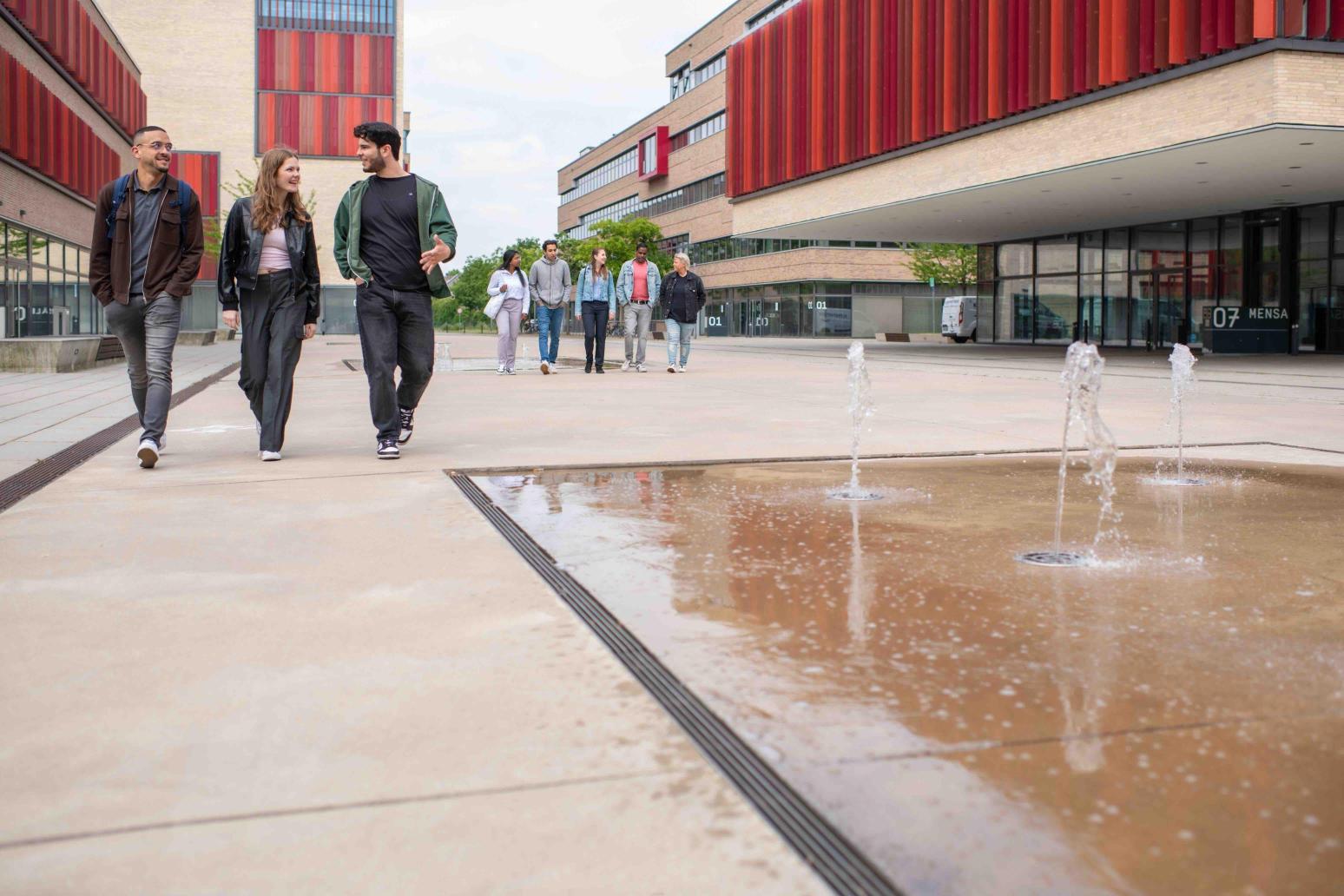AS AN ORGANIZATION

Ruhr West University of Applied Sciences (HRW) is organised in a matrix-based departmental structure. This means that the 8 institutes have been grouped into four superordinate departments as HRW competence clusters.
The individual Bachelor's and Master's degree programmes are assigned to the institutes and departments. The underlying matrix structure in teaching is reflected in the teaching transfer between the individual institutes and departments, i.e. teaching is exported and imported from the respective disciplines of the institutes into the degree programmes of other institutes. In this way, degree programmes can be flexibly staffed with lecturers from all institutes in the appropriate subject areas and a transfer of teaching and knowledge across the boundaries of the departments and institutes is made possible.

Ruhr West University of Applied Sciences has two campuses: Mülheim and Bottrop. In addition to the two main campuses in the cities of Mülheim an der Ruhr (Duisburger Str. 100) and Bottrop (Lützowstr. 5), the new Prosper III campus in Bottrop (since 2021) and the Parkstadt Mülheim campus (since 2024) have been added to HRW's range of modern rooms and laboratories in recent years.

The departments are supported by the Service Division in carrying out the central tasks of research and teaching. This is responsible for the administration of the university and performs other central tasks.

The HRW is managed by an Executive Board. This consists of a President, a Chancellor and three Vice Presidents with the main areas of responsibility: Research & Transfer, Study & Teaching and University Development & Management.

Other bodies in the university's governance structure are the committees specified in the Higher Education Act and the HRW's Basic Regulations, such as the University Council and the Senate.